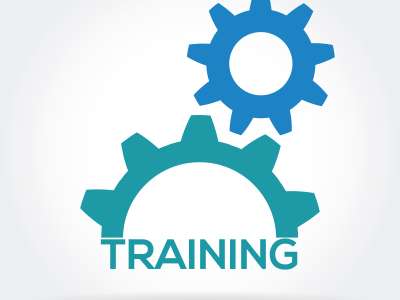
Go Kids Go have been delivering free wheelchair skills training workshops to children and young people for over 25 years. As an occupational therapist working for Go Kids Go, part of my role is to strengthen existing links with occupational therapy and physiotherapy teams across the UK and Ireland, and develop new partnerships. Attending the Posture and Mobility Group (PMG) conference provides an excellent opportunity to liaise with professionals and make new links. I hope that, by working in partnership with other professionals, the NHS and third sector can come together and provide truly holistic therapeutic intervention for young wheelchair users.
Attending events such as PMG allows me to keep my training up-to-date, current, and relevant for service users. The presentations that were particularly relevant to the training we provide and our service development were Jane Fontein’s ‘Manipulating weight-maximising efficiency: improving function with manual wheelchairs’, Kim Chaney’s ‘Solving the mystery of why a wheelchair seat is comfortable in clinic, but not at home!’, and Brian Donnelly’s ‘Improving standards and outcomes for disability equipment and services’.
With wheelchair services earmarked for change, and campaigns such as ‘Right Chair, Right Now’ hitting the headlines earlier in the year, we continue to strive for a more collaborative approach country wide. At Go Kids Go we understand that, for our young wheelchair users, getting the right wheelchair in a timely manner is only half the battle - even the most appropriate equipment can be useless without the skill-set to use it. By linking in with wheelchair services, we can ensure that all children who are receiving appropriate equipment are being offered a place on one of our training workshops.
‘Manipulating weight-maximising efficiency: improving function with manual wheelchairs’ by Jane Fontein looked at the impact of the weight of equipment on the user and the user’s mobility. Jane highlighted that the overall weight of a wheelchair has been found to be the primary reason for non-use (Cowan, 2009). In addition, wheelchair weight not only causes discomfort to the wheelchair user, but also has negative implications for the care giver. One of the key principles underpinning my practice at Go Kids Go is that the setup of a wheelchair is key to optimising independent mobility, therefore wheelchairs should be as light as possible whilst still supporting the user’s needs. ‘Fine tuning’ the wheelchair - by moving the rear axle into an optimal position and adjusting seat angle and rear wheel camber - also affects the user’s experience.
It was surprising to hear exactly how much weight can be shaved off a wheelchair by making small changes; for example, swapping 8” casters for 4” casters saving 1.6 pounds, and solid tires for pneumatic ones saving 1.4 pounds. These seemingly small components add quite significantly to the weight of the wheelchair as a whole. Some of the figures provided may well influence my decisions when ordering wheelchairs for our training workshops. Jane provided evidence-based recommendations which I shall be adhering to in future practice when working with individuals and their families.
If a wheelchair user’s experience of day to day life can be so greatly affected by the weight/set-up of a wheelchair, then it must be important to find a way to more accurately measure comfort and satisfaction. Kim Chaney discussed the difficulties in defining and quantifying a wheelchair user’s experience in order to ‘solve the mystery of why a wheelchair seat is comfortable in clinic, but not at home!’. I found this presentation particularly interesting because, while there is a lack of research directly relating to wheelchair comfort, by thinking outside the box, Kim explored data from ergonomic research on seated discomfort in vehicle design. She found that this research identified that factors such as shock and vibration, due to the movement of a vehicle on the road, have an impact on the comfort of the driver. Kim highlighted that this research relates to wheelchair users because they are likely to experience even greater amounts of shock and vibration from moving in a wheelchair. It seems important therefore, when prescribing wheelchairs and assessing suitability of equipment, that we assess the individual in motion. This could explain why we see some children on workshops who had been comfortable in their wheelchairs at time of provision but have experienced issues with further use. Again, by working with NHS services, we can ensure that these children are seen for reassessment if necessary, and appropriate adjustments can be made.
Brian Donnelly highlighted in his presentation ‘Improving standards and outcomes for disability equipment and services’ that the reason for poor provision lies in problems with policy and procedures being outdated and unclear, a lack of standardised procedures, a lack of understanding of need and demand, poor quality of equipment, low budgets, undertrained staff, and understaffed departments.
In addition to training workshops for young wheelchair users, Go Kids Go run a successful programme of training for healthcare professionals and students. The workshops are tailored to meet a group’s needs, and aim to give participants first-hand experience of some of the essential skills required for independent mobility, how they can be taught and how they can be achieved. We hope that providing these types of workshops gives current and future health care professionals a better understanding and first-hand experience to enhance and further inform their choices when providing mobility equipment for wheelchair users. In order to keep Go Kids Go’s services current and relevant, we are constantly evaluating, updating and adapting our training packages. By collaborating with healthcare professionals we hope to move forward together to create a stronger, more holistic service for wheelchair users across the UK; attending PMG conferences has proved invaluable in this process.
References
Cowan RE, Nash MS, Collinger JL, Koontz AM & Bonninger ML (2009). Impact of surface type, wheelchair weight and axle position on wheelchair propulsion by novice older adults. Archives of Physical Medicine and Rehabilitation, 90(7): 1076-1083.
Emily Ellington
Occupational Therapist and Mobility Trainer
Go Kids Go






.jpg)



no comments
Add your comment...